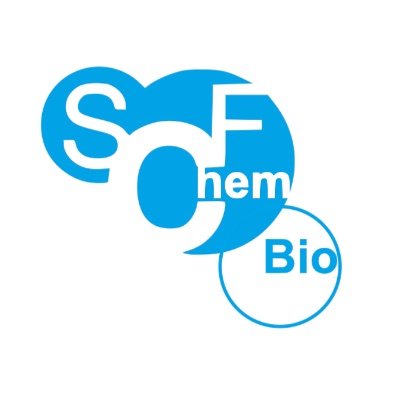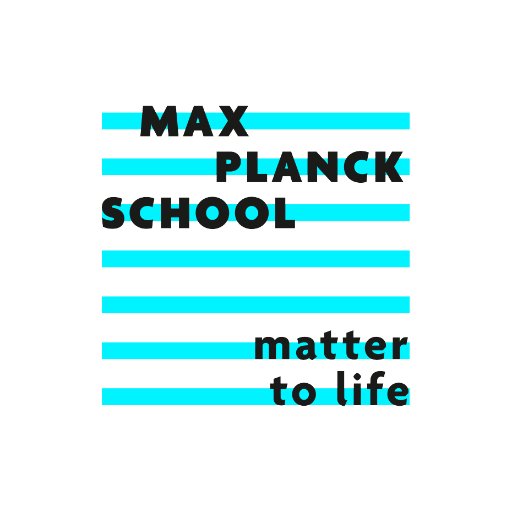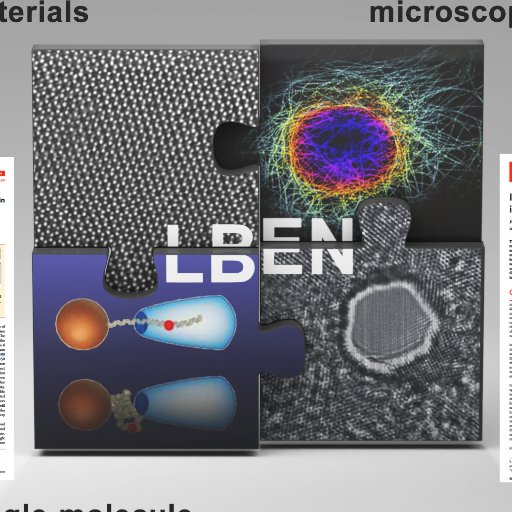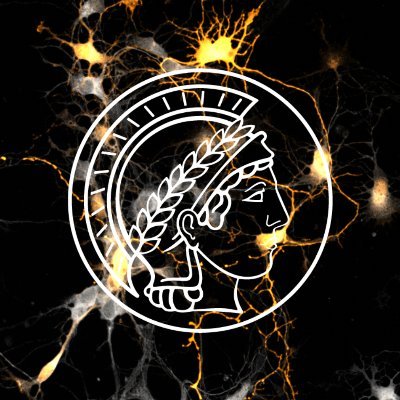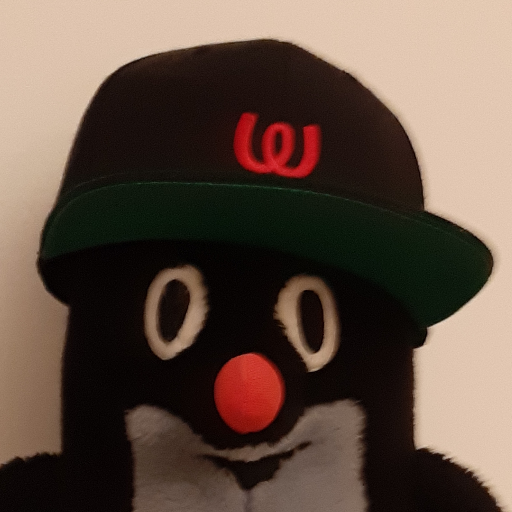
WombacherLab
@LabWombacher
Followers
397
Following
372
Media
8
Statuses
46
Chemical Biology Laboratory @ Max-Planck-Institute for Medical Research
Joined June 2019
We continue with Richard WOMBACHER for the first oral communication ! #ChemBio2024 @reseauSCF
0
4
13
What a nice way to finish the week! 🎉Our latest paper is now available online in @nchembio. 📚🔬If you missed the pre-print and like biosensors, explore our innovative approach for designing and developing chemogenetic sensors. 💡Check it out here: https://t.co/3Id5pLE0eH.
Do you want to change the color of your biosensor on demand? Still have a large dynamic range? Check our preprint on ChemoX! More about it in the thread! (1/7) Congratulation to the team, in particular the twitterless Lars Hellweg. https://t.co/7y6Tp16oAd
4
16
53
The MtL Lecture Series continues! 🎉 Join us on 17 May at 3 pm for an insight into the research of MtL Fellow Petra Schwille from @MPI_Biochem. Register now 👉 https://t.co/ggFM2ju6X6
0
16
35
Do you want to change the color of your biosensor on demand? Still have a large dynamic range? Check our preprint on ChemoX! More about it in the thread! (1/7) Congratulation to the team, in particular the twitterless Lars Hellweg. https://t.co/7y6Tp16oAd
biorxiv.org
Fluorescent biosensors enable to study cell physiology with spatiotemporal resolution, yet most biosensors suffer from relatively low dynamic ranges. Here, we introduce a family of designed Förster...
1
22
60
Hot off the press: @HertenDirk and @LabWombacher jointly developed a single molecule fluorescence screening assay for characterizing fluorogenic click reactions to improve bioorthogonal labelling. Credits go to Felix Hild, @PhilWerther and @KYserentant.
0
4
6
A new paper from Kai Johnsson’s group developed a biosensor for visualizing cytosolic and mitochondrial CoA in living cells. Open access:
nature.com
Nature Chemical Biology - Coenzyme A (CoA) is a ubiquitous and essential cofactor. A biosensor for visualizing cytosolic and mitochondrial CoA in living cells was developed to address central...
0
57
218
Happy to share our pre-print about exchangeable HaloTag Ligands (xHTLs): We describe the design and characterization of fluorescent xHTLs expanding the HaloTag repertoire and finding application in 3 super-resolution microscopy techniques! (1/9) https://t.co/2ubBVEygma
8
62
307
Natural product conference #Irsee22 about to start! Great line-up of speakers & topics in the opening session: a talented producer of new natural products, total synthesis of anti-infective drugs & a super-efficient inducer of proximity @DECHEMA @LabWombacher @ChristianJogler
1
3
11
Richard Wombacher and colleagues (@LabWombacher) report a new chemical inducer of proximity based on ABA receptor dimerization by the agrochemical manipropamid. Open access:
0
21
72
I highly recommend HDyes for live-cell imaging!👍 I was very lucky to have the chance to test these new dyes, and they really outperform, with their high SNR for wash-free labeling. Congrats for the nice work!👏
We are very happy to see our recent work on fluorogenic tetrazine probes for live cell imaging published in ACS Central Science @ACSCentSci. Check out the new Heidelberg Dyes (HDyes) at
0
2
9
Congratulations to first authors @PhilWerther and @KYserentant and big thanks to all collaboration partners @LemkeLab @LabRadenovic Xiaogang Liu @BuckupTiago @HertenDirk. @mpi_mr_hd @IPMB_HD @UniHeidelberg
0
1
6
We are very happy to see our recent work on fluorogenic tetrazine probes for live cell imaging published in ACS Central Science @ACSCentSci. Check out the new Heidelberg Dyes (HDyes) at
pubs.acs.org
Small-molecule fluorophores enable the observation of biomolecules in their native context with fluorescence microscopy. Specific labeling via bio-orthogonal tetrazine chemistry combines minimal...
1
25
134
We are glad that our fruitful collaboration with @GFantner lead to the advancements in correlative super-resolution and scanning ion-conductance microscopy imaging. We thank all collaborators! @LabWombacher @KYserentant @PhilWerther for fantastic self-blinking dyes
0
1
3
Enzyme units stacked on top of each other like a spinal column – look fabulous and contains some very fascinating research! Out now @NatureMicrobiol
https://t.co/lfObvOY3P5
https://t.co/5v560VLg6G
@mpi_mr_hd @BarendsThomas @MicroPhys @maxplanckpress #NXR #nitrate #anammox
0
6
11
Excited to share recent @J_A_C_S using far-red silarhodamines to catalyze activation of rapid bioorthogonal chemistry in vivo. Awesome collaborators Zibo Li, Xinqiao Jia, Luke Lavis, & Colin Thorpe. Great dyes make great photocatalysts! @rhodamine110.
pubs.acs.org
Chromophores that absorb in the tissue-penetrant far-red/near-infrared window have long served as photocatalysts to generate singlet oxygen for photodynamic therapy. However, the cytotoxicity and...
1
21
116
In our new preprint, we describe a general strategy to transform rhodamines into highly fluorogenic and blinking probes optimized for different imaging applications and labeling systems.
biorxiv.org
Rhodamines are the most important class of fluorophores for applications in live-cell fluorescence microscopy. This is mainly because rhodamines exist in a dynamic equilibrium between a fluorescent...
1
14
39
My first tweet ever to guide you to our new pre-print about a side-by-side kinetic and structural characterization of HaloTag7, SNAP-tag and CLIP-tag. Now available on biorxiv!! https://t.co/GuKE0wpuar
biorxiv.org
The self-labeling protein tags (SLPs) HaloTag7, SNAP-tag and CLIP-tag allow the covalent labeling of fusion proteins with synthetic molecules for applications in bioimaging and biotechnology. To...
1
15
57
Our Chemical Biology department is offering two #PhD fellowships as part of the #CONSENSE training network. The objectives for the PhD students in the group of Kai Johnsson will be the engineering of new biosensors and biomolecular nanoswitches. Apply now! https://t.co/zUOcC0MPBr
0
10
11
Excited to share our work on a-TCO’s— a new family of trans-cyclooctenes with high reactivity and improved physiochemical properties that can be accessed as single diastereomers. Congratulations to Jess Pigga for leading this work.
2
13
44
New paper out! #Aptamer-based proximity labeling guides covalent #RNA modification. #Biochemistry
https://t.co/ItfthoqMyi
pubs.rsc.org
We describe the development of a proximity-induced bio-orthogonal inverse electron demand Diels–Alder reaction that exploits the high-affinity interaction between a dienophile-modified RhoBAST...
0
13
36

